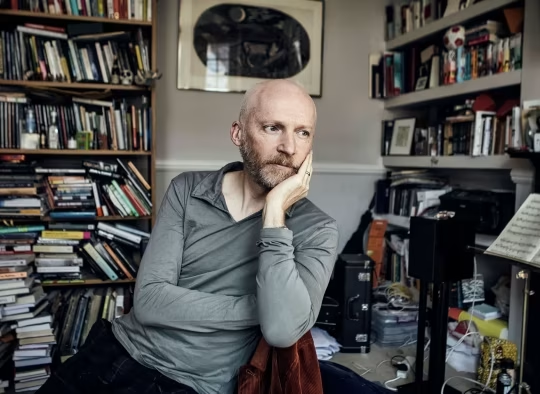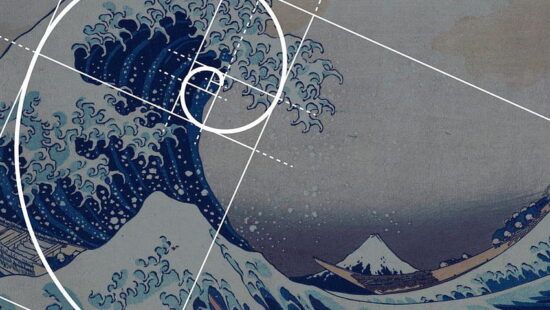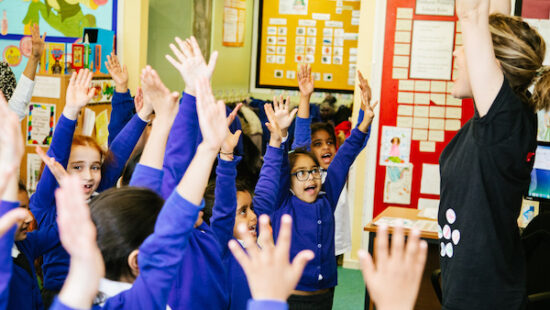Telling stories with Maths

Telling stories with Maths
By Marcus du Sautoy
In his quest to popularise mathematics, Marcus du Sautoy has been sharing his enthusiasm for all things mathematical on our TVs and radios for almost twenty years. Alongside lecturing as Professor of Mathematics at the University of Oxford, Marcus has published numerous newspaper articles, books and academic papers.
He was listed as one of Esquire’s 100 most influential men under 40 and, in 2010, was awarded an OBE for “services to Science”.
Mathematics is seen as a dry subject, something that must be useful. As a result, children don’t get much to chew on at primary school where mathematics is often presented technically rather than creatively. But mathematics isn’t just a useful science. It is itself a very creative subject, and it can be taught as playfully as the arts.
At its core, mathematics is storytelling. It’s the language we use to navigate our physical environment in a scientific way. The arts can be used to re-physicalise mathematics, giving children who struggle with the more abstract aspects the opportunity to visualise, play and make connections. If children can explore mathematical ideas through theatre, dance and movement, they’re going to have a better chance of navigating the abstract side of the subject.
One of my favourite mathematical stories — a story that actually happens in nature — is of the cicadas In North America. One type only appears every seventeen years, another every thirteen, but none at twelve, fourteen, fifteen, sixteen or eighteen years. They’ve evolved prime number life cycles. Why? Because that way they’re less likely to come across predators that also appear periodically in the forest.
This story can be brought to life with children through drama, by making numbers from one to one hundred in the classroom and getting children to play the cicadas or the predator. As you go through the hundred years with the cicadas appearing, say, every nine years and the predator every six years, you’ll find they coincide every eighteen years. Each time they meet, the predator gets to choose one of the cicadas to eat. But change the cycle so the predators are appearing every six years and the cicadas appearing every seven years, and they don’t coincide until year forty two. Through this game children are exploring a real scientific example. It’s basic mathematics, nothing beyond the multiplication table, but because it’s a good story it embeds in the memory.
It’s so important to introduce maths in this kind of a creative way in primary school and not to wait until secondary school. If children can understand why they’re doing something, it gives them the inspiration for carrying on the hard work. And when it comes to mathematics, it’s crucial that children do carry on the hard work. Mathematics is embedded in many places in life; smart phones, music and urban architecture, to name a few.
Mathematics also hides behind many things across the curriculum but at school it tends to be compartmentalised as “numeracy hour”. Children move from one subject to another without realising they’re all intimately connected. But if you can make interesting connections between subjects, it’s always going to help both sides. Mathematics is the glue between many ways of seeing the world, the perfect bridge between science and creativity.
If I was going to rewrite the curriculum I’d say let’s forget about maths being useful all the time and let’s just tell great stories. The arts are the perfect vehicle to help tell them.
Marcus du Sautoy was President of the Mathematical Association 2012-2013, a professional society concerned with mathematics education in the UK. As Professor of Mathematics at the University of Oxford, Marcus was elected to the Simonyi Professorship for the Public Understanding of Science in 2008, succeeding Richard Dawkins. Marcus’s television appearances include presenting two landmark TV series for the BBC ‘The Story of Maths’ and ‘The Code’ together with presenting numerous episodes of ‘Horizon’ and other documentaries. He also co-presents the mathematical conundrum gameshow series School of Hard Sums alongside Dara Ó Briain. He has published three books and is Lauren Child’s geek consultant for her Ruby Redfort series. He writes regularly for The Times and The Guardian.

